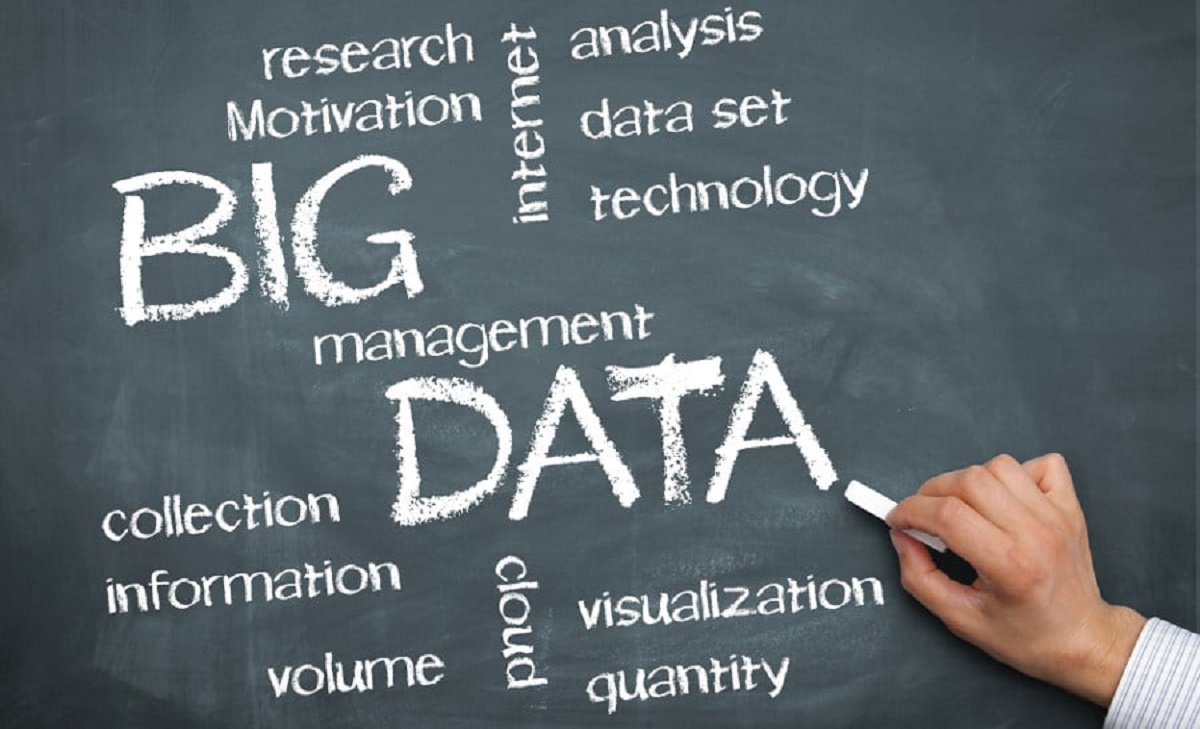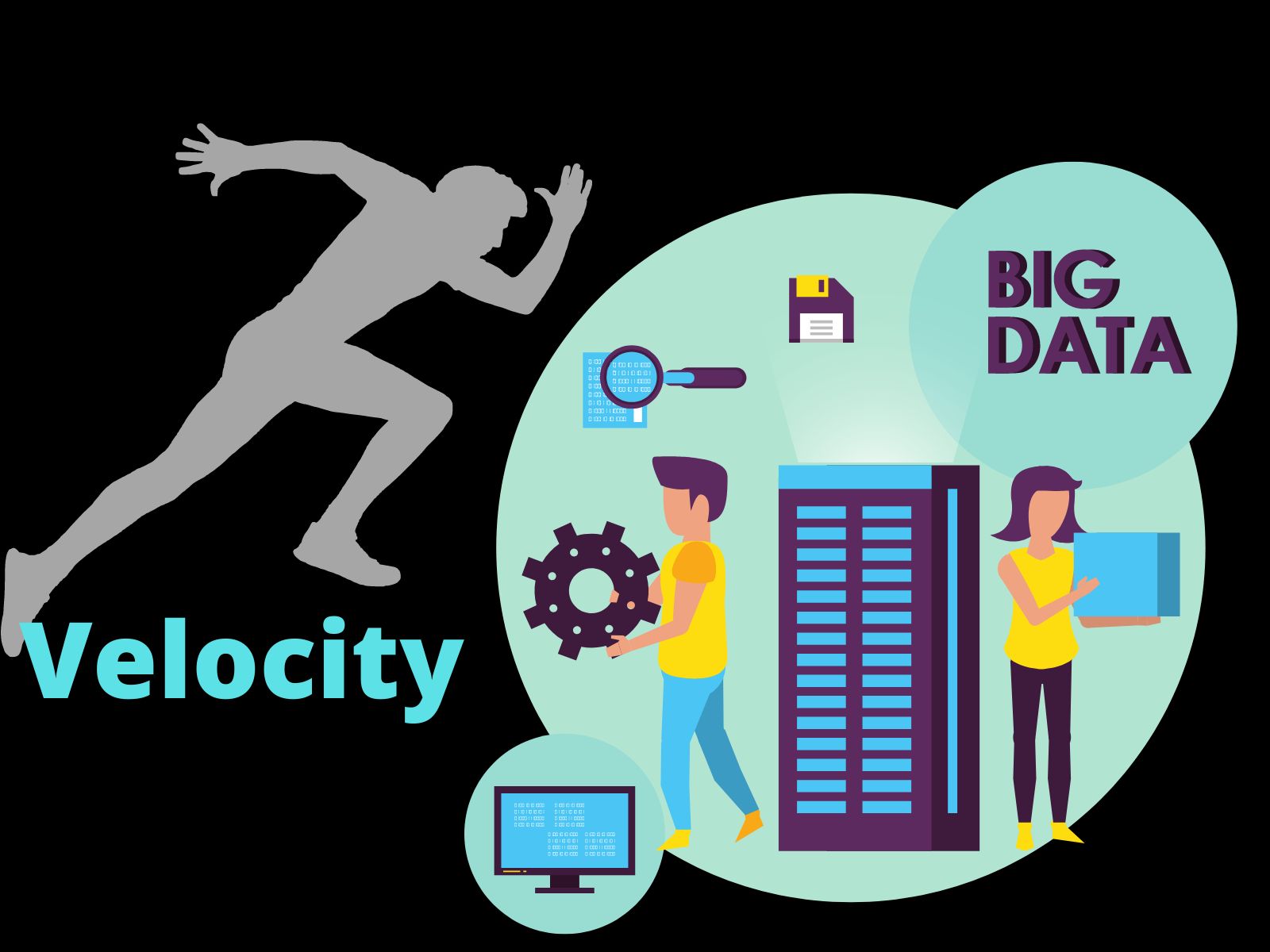Introduction
Big Data has become a buzzword in today’s digital age, and its importance cannot be overstated. With the ever-increasing volume, velocity, and variety of data being generated, organizations are seeking ways to harness this wealth of information to drive insights and make informed decisions. But what exactly is Big Data?
Big Data refers to vast amounts of structured and unstructured data that cannot be easily processed or analyzed using traditional database management systems. It encompasses data sets that are too large, complex, or dynamic for traditional tools to handle effectively. The key characteristics of Big Data are often described using the “3Vs” model: volume, velocity, and variety.
The volume of Big Data refers to the sheer magnitude of data being generated every second. From social media posts and e-commerce transactions to sensor data and healthcare records, the volume of data continues to grow exponentially. This staggering volume poses challenges in terms of storage, processing, and analysis.
The velocity of Big Data refers to the speed at which data is being generated and needs to be processed in real-time or near real-time. With the advent of the Internet of Things (IoT) and other connected devices, data is being generated at an unprecedented speed, requiring organizations to process and analyze it rapidly to derive meaningful insights.
The variety of Big Data refers to the diverse range of data types and formats that exist. From structured data like sales figures and customer demographics to unstructured data like social media posts and images, Big Data comprises a heterogeneous mix of information. Extracting insights from this variety of data sources requires advanced analytical techniques.
The importance of Big Data lies in its potential to unlock valuable insights and reveal hidden patterns that can drive business growth and innovation. By analyzing Big Data, organizations can gain a deeper understanding of customer behavior, optimize operations, detect fraud, improve healthcare outcomes, and make data-driven decisions in multiple domains.
In the following sections, we will explore various examples of how Big Data is being utilized in different industries and domains to derive actionable insights and create value.
Definition of Big Data
Big Data refers to exceptionally large and complex datasets that cannot be effectively managed, processed, and analyzed using traditional data processing methods. It encompasses vast volumes of structured, semi-structured, and unstructured data that are generated from diverse sources such as social media platforms, Internet of Things (IoT) devices, sensors, financial transactions, and more.
The term “Big Data” is often characterized by the three V’s: volume, velocity, and variety. Volume refers to the immense size of the data, with organizations dealing with petabytes and even exabytes of information. Velocity denotes the speed at which data is generated, requiring real-time or near real-time analysis. Variety signifies the variety of data formats and sources, including text, images, audio, video, and more.
However, it’s important to note that while volume, velocity, and variety are commonly used to describe Big Data, some experts argue that other V’s, such as veracity (data accuracy) and value, should be considered as well. Big Data is not solely about quantity but also about the quality and relevance of the information.
Big Data is typically characterized by its five key attributes:
- Volume: Refers to the vast amount of data being generated and collected from different sources.
- Velocity: Refers to the speed at which data is created, processed, and analyzed in real-time or near real-time.
- Variety: Refers to the diverse types of data, including structured, semi-structured, and unstructured data.
- Veracity: Refers to the uncertainty or trustworthiness of the data, considering its accuracy, completeness, and reliability.
- Value: Refers to the insights, knowledge, and value that organizations can extract from the analysis of Big Data.
The sheer scale and complexity of Big Data require advanced technologies, tools, and methodologies to effectively store, process, and analyze the information. This includes technologies like distributed computing, cloud computing, data storage systems, data mining, machine learning, and artificial intelligence.
By utilizing Big Data analytics, organizations can uncover hidden patterns, correlations, and valuable insights that can drive business growth, improve decision-making, enhance customer experiences, optimize operations, and even contribute to scientific research and healthcare advancements.
Importance of Big Data
In today’s data-driven world, the importance of Big Data cannot be overstated. It has emerged as a valuable asset for organizations across various industries, enabling them to gain valuable insights, make informed decisions, and drive innovation. Here are some key reasons why Big Data is important:
- Data-Driven Decision Making: Big Data provides organizations with access to vast volumes of data, allowing them to make data-driven decisions. By analyzing large datasets, organizations can identify patterns, trends, and correlations that can lead to actionable insights. This empowers businesses to optimize processes, enhance customer experiences, and gain a competitive edge in the market.
- Improving Operations: Analyzing Big Data can help organizations optimize their operations. By closely monitoring and analyzing data related to supply chain management, inventory levels, production processes, and customer demand, organizations can make more accurate forecasts, reduce inefficiencies, streamline operations, and improve overall productivity.
- Enhancing Customer Experiences: Big Data enables organizations to gain a deeper understanding of their customers. By analyzing customer data, including demographics, preferences, purchase history, and online behavior, organizations can personalize marketing campaigns, improve product recommendations, and provide better customer service. This leads to enhanced customer satisfaction, loyalty, and increased revenue.
- Detecting and Preventing Fraud: Big Data analytics plays a crucial role in fraud detection and prevention. By analyzing large datasets in real-time, organizations can identify abnormal patterns and anomalies that may indicate fraudulent activities. This allows them to take immediate action to mitigate the risks and protect their business interests.
- Improving Healthcare Outcomes: In the healthcare industry, Big Data has the potential to revolutionize patient care. By analyzing patient data, medical records, genetic information, and real-time health monitoring data, healthcare professionals can gain insights into disease prevention, early detection, personalized treatments, and improved patient outcomes.
- Driving Innovation: Big Data provides a wealth of information that can fuel innovation. By analyzing market trends, customer feedback, and competitor data, organizations can uncover new opportunities, develop innovative products and services, and adapt to changing market demands. Big Data also powers advancements in fields like artificial intelligence, machine learning, and predictive analytics, leading to groundbreaking discoveries.
The importance of Big Data lies in its ability to unlock valuable insights, drive informed decision-making, and generate tangible business outcomes. Organizations that leverage the power of Big Data can stay ahead of the curve, gain a competitive advantage, and thrive in today’s data-centric world.
Big Data Examples
The application of Big Data spans across various industries and domains, playing a vital role in driving innovation, optimizing operations, and improving decision-making. Here are several notable examples of how organizations are harnessing the power of Big Data:
- Social Media Data Analysis: Social media platforms generate an enormous amount of data daily. Companies leverage Big Data analytics to gain insights into consumer sentiment, preferences, and behavior. By analyzing social media data, businesses can make targeted marketing campaigns, improve brand reputation, and enhance customer engagement.
- E-commerce Recommendation Systems: E-commerce platforms utilize Big Data to provide personalized product recommendations. By analyzing customer browsing history, purchase behavior, and product reviews, these systems can suggest relevant products to customers, leading to increased sales and customer satisfaction.
- Healthcare and Patient Data Analysis: Big Data analytics has transformed healthcare by analyzing vast amounts of patient data. It enables healthcare providers to identify disease trends, predict outbreaks, personalize treatments, and improve patient outcomes. Researchers also use Big Data to accelerate drug discovery and development processes.
- Fraud Detection in Financial Services: Financial institutions employ Big Data analytics to detect and prevent fraudulent activities. By analyzing large volumes of transactional data in real-time, they can identify patterns and anomalies that indicate fraudulent behavior. This helps in minimizing financial losses and protecting customers’ interests.
- Smart Cities and Internet of Things (IoT): Big Data plays a crucial role in creating smart cities. IoT devices generate abundant data on traffic patterns, energy consumption, waste management, and more. By analyzing this data, cities can optimize resource allocation, enhance public safety, and improve overall quality of life for residents.
These examples represent just a glimpse of how Big Data is being utilized in different industries. From retail and finance to healthcare and urban planning, organizations across the board are embracing the power of Big Data to gain insights, drive innovation, and make data-driven decisions.
Example 1: Social Media Data Analysis
Social media platforms like Facebook, Twitter, and Instagram generate an enormous amount of data every day. This data includes user interactions, posts, comments, likes, shares, and more. Organizations leverage Big Data analytics to analyze this social media data and gain valuable insights for various purposes.
One of the key applications of social media data analysis is understanding consumer sentiment and behavior. By analyzing the text and emotions expressed in social media posts, organizations can gauge public opinion about their products, brands, or industry trends. This can help businesses make informed decisions about marketing strategies, product enhancements, and customer engagement.
For example, a company may analyze social media data to track customer feedback on a newly launched product. By monitoring posts and comments, they can identify areas for improvement, address customer concerns, and enhance the overall customer experience. Additionally, sentiment analysis can help organizations understand the public perception of their brand and make necessary adjustments to maintain a positive reputation.
Furthermore, social media data analysis enables businesses to identify influencers and understand their impact on consumers. By analyzing follower counts, engagement rates, and the topics influencers discuss, organizations can identify potential brand ambassadors or collaborators for targeted marketing campaigns. This allows businesses to tap into the influential power of individuals who can amplify their brand message to a wider audience.
Another application of social media data analysis is identifying market trends and predicting consumer behavior. By analyzing the topics, hashtags, and discussions that gain traction on social media, organizations can stay ahead of emerging trends and adapt their strategies accordingly. This can include developing new products, targeting specific demographics, or adjusting marketing messages to align with popular conversations.
Moreover, social media data analysis plays a crucial role in crisis management. Organizations can monitor social media platforms for any negative mentions or sentiment surrounding their brand or industry. By detecting and addressing potential crises early on, organizations can mitigate reputational damage, take appropriate action, and communicate effectively with their target audience.
Overall, social media data analysis is a powerful tool for businesses to gain insights into consumer sentiment, behavior, and market trends. By leveraging Big Data analytics, organizations can make data-driven decisions, enhance their brand reputation, and engage with their audience more effectively.
Example 2: E-commerce Recommendation Systems
E-commerce platforms have revolutionized the way we shop, and Big Data plays a key role in enhancing the shopping experience through recommendation systems. These systems utilize advanced analytics to analyze customer data and provide personalized product recommendations based on their browsing history, purchase behavior, and preferences.
E-commerce recommendation systems leverage Big Data to understand customers’ preferences and make accurate predictions about their future needs. By analyzing large volumes of data, including product metadata, customer reviews, and historical purchase patterns, these systems can offer relevant and personalized recommendations to customers. This not only improves the shopping experience but also increases the likelihood of making additional purchases.
One of the main benefits of e-commerce recommendation systems is the ability to increase customer engagement and loyalty. By suggesting products that align with customers’ interests or similar items that others have purchased, organizations can entice customers to explore more options and discover new products. This personalized approach creates a sense of customization and convenience, fostering a positive shopping experience and encouraging repeat purchases.
Furthermore, e-commerce recommendation systems have the potential to drive revenue growth. By recommending complementary or related products, organizations can increase the average order value by encouraging customers to make additional purchases. This technique, known as upselling or cross-selling, is a proven strategy that boosts sales and maximizes revenue.
Additionally, these recommendation systems allow organizations to optimize their inventory management. By analyzing purchasing patterns and demand trends, organizations can identify popular products and ensure they are adequately stocked. Furthermore, they can identify slow-moving inventory and develop strategies to clear it, minimizing costs and maximizing profitability.
Moreover, e-commerce recommendation systems help overcome the challenge of information overload. With the vast number of products available online, customers can often feel overwhelmed with choices. Recommendation systems narrow down the options by presenting only the most relevant and personalized suggestions, simplifying the decision-making process for customers and increasing their satisfaction.
Overall, e-commerce recommendation systems powered by Big Data analytics enhance the shopping experience by providing personalized and relevant product recommendations. By leveraging customer data, these systems drive customer engagement, increase sales, optimize inventory management, and simplify the decision-making process. As e-commerce continues to grow, the importance of recommendation systems in driving customer satisfaction and revenue cannot be underestimated.
Example 3: Healthcare and Patient Data Analysis
Healthcare organizations are faced with an abundance of data, ranging from patient records and medical imaging to genomic data and real-time health monitoring. Big Data analytics has revolutionized healthcare by enabling organizations to analyze and derive insights from this vast amount of patient data, leading to improved healthcare outcomes and personalized treatments.
One of the key applications of Big Data analytics in healthcare is disease prediction and prevention. By analyzing large datasets, including patient demographics, medical history, lifestyle factors, and genetic information, healthcare providers can identify patterns and risk factors associated with certain diseases. This allows for early detection, proactive interventions, and targeted preventive measures to reduce the likelihood of disease development.
Another area where Big Data analysis is making a significant impact is in improving patient care and treatment. By integrating electronic health records, medical imaging data, and real-time patient monitoring, healthcare professionals can gain a comprehensive view of each patient’s health. This enables them to make more accurate diagnoses, develop personalized treatment plans, and monitor patient progress throughout their healthcare journey.
Genomic data analysis is another powerful application of Big Data in healthcare. By analyzing a patient’s genetic makeup, researchers and healthcare providers can identify genetic markers associated with certain diseases or drug responses. This allows for more precise and personalized treatment approaches, known as precision medicine, which can result in more effective therapies and improved patient outcomes.
Furthermore, Big Data analytics in healthcare can contribute to public health initiatives and healthcare policy decisions. By analyzing population-level health data, organizations can identify disease trends, measure the effectiveness of public health interventions, and allocate resources strategically. This information aids policymakers in making informed decisions to improve public health outcomes.
In addition to improving patient care, Big Data analytics in healthcare also plays a crucial role in drug discovery and development. By analyzing vast amounts of biomedical research data, including clinical trials, medical literature, and drug interactions, researchers can identify potential drug targets, optimize drug dosages, and speed up the development process. This has the potential to save time, reduce costs, and bring lifesaving treatments to patients more efficiently.
Overall, Big Data analysis in healthcare has the potential to revolutionize patient care, disease prevention, and healthcare decision-making. By leveraging the power of Big Data, healthcare organizations can unlock valuable insights, deliver personalized treatments, and improve healthcare outcomes for individuals and populations as a whole.
Example 4: Fraud Detection in Financial Services
Fraud detection is a critical concern for financial institutions, and Big Data analytics plays a pivotal role in mitigating risks and identifying fraudulent activities. By analyzing large volumes of transactional data, customer profiles, and historical patterns, financial organizations can detect anomalies and patterns that indicate fraudulent behavior.
One of the primary applications of Big Data analytics in fraud detection is the identification of abnormal patterns in financial transactions. By analyzing transactional data in real-time, organizations can detect suspicious activities such as unusual spending patterns, multiple transactions within a short timeframe, or transactions from unfamiliar locations. These patterns can indicate potential fraudulent activity, allowing financial institutions to take immediate action and protect their customers and assets.
Furthermore, Big Data analytics enables organizations to perform network analysis to identify intricate fraud schemes. By analyzing the relationships between different entities, such as account holders, vendors, and beneficiaries, organizations can uncover hidden connections and uncover fraudulent networks. This helps in understanding the full extent of the fraud and taking targeted actions to disrupt the criminal activities.
Machine learning algorithms complement Big Data analytics in fraud detection by improving the accuracy and efficiency of detection models. These algorithms can learn from historical data, detecting patterns and anomalies that may not be evident to traditional rule-based systems. Machine learning models continuously adapt and evolve based on new emerging patterns and fraudulent techniques, allowing organizations to stay one step ahead of fraudsters.
Moreover, Big Data analytics helps financial institutions in identity theft detection. By analyzing customer profiles, biometric data, and behavior patterns, organizations can identify inconsistencies and anomalies that may indicate fraudulent use of someone’s identity. This allows organizations to take appropriate actions to prevent financial loss and protect their customers’ identities.
Another aspect of fraud detection in financial services is the analysis of online and mobile banking transactions. With the increasing adoption of digital financial services, organizations must ensure the security and integrity of these platforms. By analyzing data from digital channels, such as IP addresses, device information, and transactional behavior, organizations can identify suspicious activities and prevent unauthorized access to customer accounts.
In summary, Big Data analytics has become a critical tool in fraud detection for financial institutions. By leveraging advanced analytics techniques, organizations can analyze vast amounts of data, identify patterns, and anomalies that signal fraudulent activities, and take immediate action to protect both their customers and their own financial interests.
Example 5: Smart Cities and Internet of Things (IoT)
The concept of smart cities revolves around leveraging technology and data to improve the quality of life for citizens, enhance sustainability, and optimize urban infrastructure. Big Data analytics plays a crucial role in the development and management of smart cities, particularly through the integration of Internet of Things (IoT) devices.
Smart cities use IoT devices, such as sensors, cameras, and connected devices, to gather vast amounts of data in real-time. This data encompasses various aspects of city life, including traffic patterns, air quality, waste management, energy consumption, and more. By analyzing this data through Big Data analytics, cities can gain valuable insights to improve urban planning and resource allocation.
One of the key applications of Big Data analytics in smart cities is traffic management. By analyzing data from traffic sensors, satellites, and mobile devices, cities can identify congestion patterns, optimize traffic signal timings, and provide real-time traffic information to drivers. This not only reduces traffic congestion and travel times but also enhances road safety and reduces fuel consumption and emissions.
Furthermore, Big Data analytics enables smart cities to improve public safety. By analyzing data from surveillance cameras, social media, and emergency service calls, cities can detect suspicious activities, monitor crowd movements during events, and respond quickly to emergencies. This enhances the overall security and well-being of citizens.
Another application of Big Data analytics in smart cities is energy management. By analyzing data from smart meters, weather sensors, and building automation systems, cities can optimize energy consumption, reduce waste, and promote sustainability. This can include implementing dynamic pricing for energy usage, identifying areas of high energy consumption, and promoting energy-efficient practices among residents and businesses.
Moreover, Big Data analytics in smart cities helps in waste management. By analyzing data from waste collection sensors, smart bins, and citizen feedback, cities can optimize waste collection routes, identify areas with high levels of waste generation, and promote recycling initiatives. This leads to more efficient waste management processes and contributes to a cleaner and healthier environment.
In addition, Big Data analytics in smart cities contributes to better urban planning. By analyzing data on population demographics, land use, transportation, and infrastructure, cities can make informed decisions regarding the development of new neighborhoods, public facilities, and transportation systems. This leads to more sustainable and livable cities that cater to the needs of their residents.
Overall, Big Data analytics in smart cities, driven by the Internet of Things (IoT), enables cities to harness the power of data to optimize resources, enhance sustainability, improve public safety, and ultimately create more livable environments for their citizens.
Conclusion
Big Data analytics has emerged as a powerful tool in today’s digital age, enabling organizations to derive valuable insights, make data-driven decisions, and drive innovation. From social media data analysis to fraud detection in financial services, healthcare analytics, e-commerce recommendation systems, and smart cities powered by IoT, the examples of Big Data applications are vast and diverse.
By analyzing large volumes of data, organizations can uncover patterns, trends, and correlations that were previously hidden. This empowers businesses to optimize operations, enhance customer experiences, and gain a competitive advantage in the market. In healthcare, Big Data analysis improves patient care, enables personalized treatments, and accelerates medical research. Financial institutions leverage Big Data to detect and prevent fraud, safeguarding their customers and assets.
E-commerce recommendation systems driven by Big Data analytics provide personalized product recommendations, fostering customer engagement, and increasing sales. Smart cities, incorporating IoT and Big Data analytics, optimize urban infrastructure, enhance public safety, and promote sustainability.
The importance of Big Data lies in its ability to unlock valuable insights, drive informed decision-making, and generate significant business outcomes. It has become an essential tool for organizations across industries to thrive in today’s data-centric world.
As Big Data continues to evolve and new technologies and analytical techniques emerge, the possibilities for its application and value creation are boundless. Companies that can effectively harness the power of Big Data and apply advanced analytics will be well-positioned to succeed and thrive in an increasingly data-driven future.

























